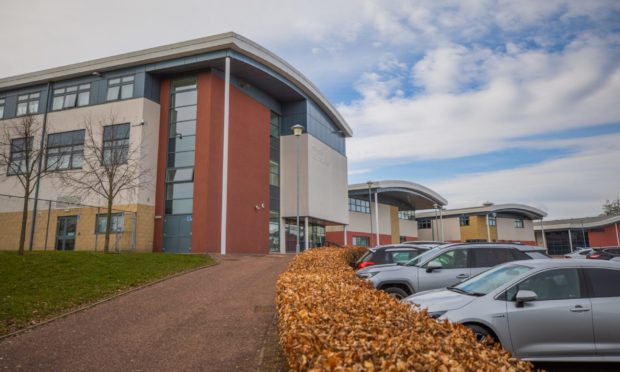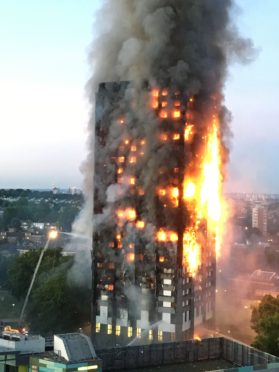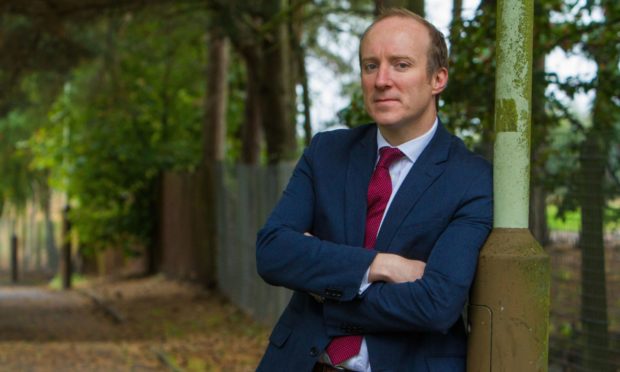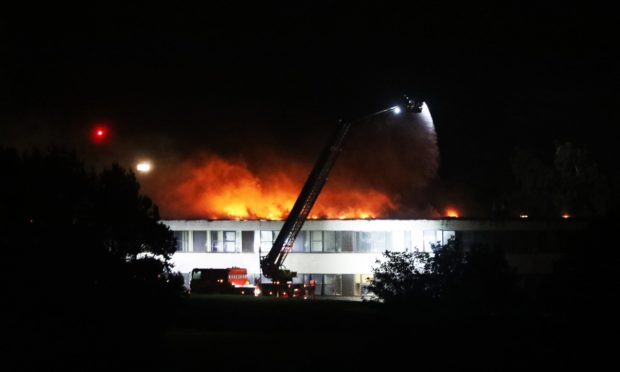Grenfell Tower cladding covering a Dundee school is finally set to be removed this summer – four years after the potentially harmful insulation was first highlighted.
Almost a quarter of the cladding on the external walls of St Paul’s Academy is constructed of Reynobond PE, which was also found in the exterior panels of the London block which went up in flames in June 2017.
The cladding is used at the school as an elevation treatment between upper windows and roof levels to 24% of the building elevation.
City council chiefs were first notified of the material a month after the tragic blaze which claimed the lives of at least 70 people.
A freedom of information request we submitted to Dundee City Council revealed the material still encases the Kirkton school.
However this will be the final year pupils will be present in the school with the cladding as the removal has been scheduled to take place during the summer holidays.
A Dundee City Council spokesman said: “Work to replace the cladding will now take place during the summer months.”
Four year delay
However concerns have been raised over why it has taken so long to remove the potentially dangerous insulation.
Local councillors were first asked to approve a £70,000 financial contribution towards the removal of the insulation in November 2018, and it was expected to be removed the following summer.
Almost four years after its discovery, the material is still part of the cladding wrapped around the city school.
The safety of pupils and staff should be of the utmost concern.”
Michael Marra
When probed, the local authority said “logistical” problems had caused the original delays which had then been exacerbated by the Covid-19 pandemic and subsequent lockdowns.
North East MSP Michael Marra, who is also Scottish Labour’s education spokesman, said: “This material was identified four years ago. Money was approved by councillors two and a half years ago.
“A date for this work should be set immediately and the works undertaken as soon as possible.
“The safety of pupils and staff should be of the utmost concern. There should be no further delays.”
What is Reynobond PE?
The aluminium composite material (ACM) known as Reynobond meets current Scottish building standards, it is understood.
However the UK Government may be considering a ban on this type of cladding in the future.
It is made from polyethylene plastic sandwiched between two very thin sheets of aluminium and was sold by French-based firm Arconic Architectural Products.
The panels were installed on the sides of the Grenfell Tower flats – and on building projects across the world – to make it warmer and drier.
But this type of cladding is considered highly flammable.
Braeview Academy fire
The local authority committed to removing the insulation at St Paul’s following a devastating blaze at city school Braeview Academy in September 2018.
It was part of the council’s efforts to increase safety after a number of failures – which may have limited fire damage – were highlighted months before.
The recommendations went unresolved by the time the flames engulfed the school, and we revealed that more than two years later, the school was still considered a “substantial” fire risk.
Is it used in other local schools?
Following the Grenfell blaze, an investigation by the Scottish Government found that schools in 14 local authorities were clad in Aluminium Composite Material (ACM), however it was not disclosed which schools were affected.
St Paul’s is the only city school to be clad in the harmful material.
As part of a series of freedom of information requests, the four local authority areas in Tayside and Fife were asked to confirm which schools used the aluminium composite materials.
This could include other ACM insulation or the same materials used in the Grenfell Tower block.
In Angus, while no school is entirely clad in these materials, two schools have small areas of ACM cladding.
Just 3.5% of the 1,000 square metre external wall of Timmergreens Primary in Arbroath uses a polyethylene cored insulation known as Alucobond, however this material was not used in the Grenfell flats.
Warddykes Primary, also in Arbroath, has 4.5% of its 1,300 square metre wall area clad with Alucobond.
In both cases, the council says the panel system meets Class O requirement in accordance with the Scottish Building Regulations and both schools have regularly serviced sprinkler and fire alarm systems.
Fife Council and Perth and Kinross Council said the Grenfell cladding is not used in any of their school buildings.













